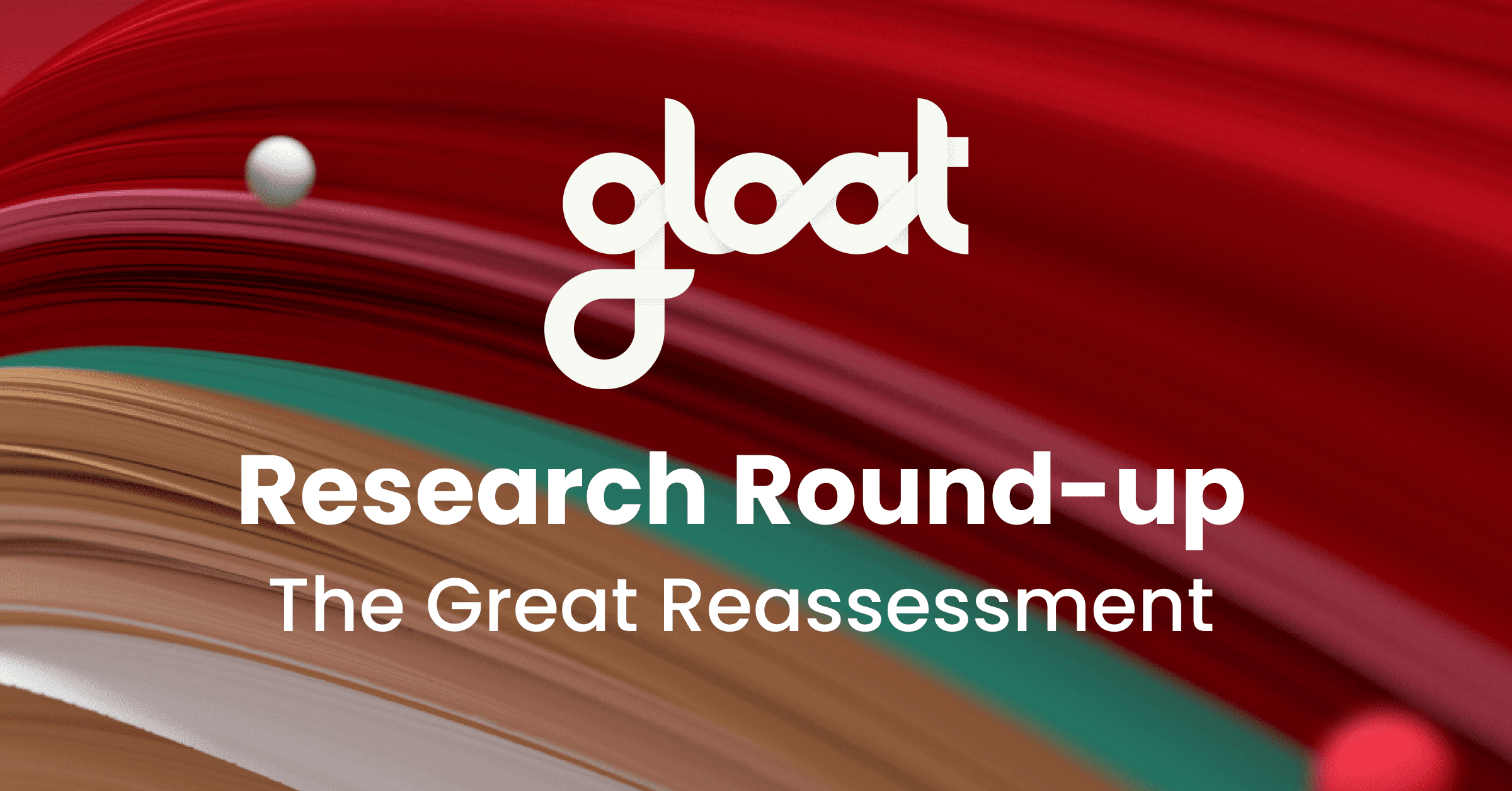Importance of upskilling in preparing for the future of work
Exploring upskilling strategies and the role they’ll play in our next chapter

As a business or HR leader, you’ve probably noticed that employee upskilling and reskilling are getting a lot of traction lately. Skills have emerged as a key area of focus for 2024, with Gartner highlighting skills management as one of the most crucial HR technologies.
It’s no surprise that so many executives are setting their sights on skills, given that skills-based organizations are 49% more likely to improve processes to maximize efficiency than their job-dominant competitors.
While skill-building is an essential component of any future-fit talent management plan, many upskilling strategies are missing the mark. Without a comprehensive view of workforce capabilities, leaders will struggle to devise skill-building initiatives that bridge knowledge gaps and drive maximal impact. Fortunately, there are a handful of new tools and tactics that executives can harness to take their upskilling and reskilling approach to the next level.
What is upskilling?
Upskilling is the strategic enhancement of an employee’s skill set, aimed at boosting their proficiency and adaptability in their current roles. Typically, as employees gain more experience within their current field of expertise, their capabilities and mastery of their role will also expand.
Upskilling is usually an intentional learning process where employees gain exposure to deeper knowledge through content-based coursework and experiential learning opportunities.
Upskilling can include developing employees’ mastery of both technical and soft skills. Oftentimes, one of the main goals of any upskilling initiative is to help employees gain the competencies needed to take on a more advanced role within their organization.
That’s why upskilling is typically a core component of most succession planning strategies—in order to move into a leadership role, employees must first build up the skills and experience they’ll need to not only execute their responsibilities but also guide their colleagues. Managers and employees will often come together to discuss the upskilling opportunities that align with every individual’s long-term goals, as well as business-wide objectives.
Upskilling not only enhances individual performance but also plays a crucial role in continuous organizational growth.
Differences between upskilling, reskilling, and cross-skilling
Upskilling and reskilling are often used interchangeably, but there are several differences between the terms. Here’s how you can distinguish between them:
Upskilling describes any process that helps someone answer the following question: “What additional skills do I need to progress in my current career?”. It’s about enabling employees to accelerate their progression up traditional, linear career paths.
In contrast, reskilling is for employees who are interested in switching lanes. It empowers them to answer the question, “What skills do I need to transition from one department to another?”
Since there are some skills that everyone will need in the new world of work, businesses must also prioritize cross-skilling. The purpose of cross-skilling is to develop a portfolio of skills that are valuable across multiple verticals, functions, or domains.
If you’re looking at T-shaped talent model in which the vertical bar represents an employee’s depth of skills and the horizontal bar depicts a range of skills, upskilling is about lengthening the vertical base of the T. Reskilling is what happens when you move that vertical line entirely. And cross-skilling is about elongating the horizontal top of the T.

Why upskilling and reskilling are now more critical than ever
Skill-building has always been important, but recent events are raising the stakes. We’re now in what’s often called “the Fourth Industrial Revolution”, a time in which advances in AI and automation are revolutionizing the way we work. Since the pace of change is accelerating and the half-life of skills is shrinking, developing new competencies can no longer be an afterthought.
Instead, research points to upskilling and reskilling as prerequisites for success. The World Economic Forum predicts that half of all employees will need reskilling by 2025, as the adoption of technology increases. While the rise in automation and AI isn’t going to push employees out of the job market as some people once feared, The World Economic Forum predicts that it will create as many as 69 million new roles. And although that’s good news, these jobs are going to come with new sets of required knowledge, which is where the increased need for upskilling and reskilling comes into play.
Upskilling and reskilling vs. external hiring
There’s no denying that upskilling and reskilling initiatives require an investment in both money and time. Superior approaches generally include both compelling content as part of a Learning and Development (L&D) curriculum, as well as experiential opportunities such as mentoring, projects, and gigs.
Given the effort upskilling and reskilling require, some might wonder if it might just be easier to prioritize external hiring. While it might sound like a simpler strategy on the surface, turning to new talent won’t solve your skill-building concerns. First off, today’s record-breaking labor shortage will make finding the right people exceptionally difficult. And even if you manage to recruit employees with the skills you’re looking for, they’re still going to need to build new capabilities down the line. Since the pace of change is accelerating, there isn’t a single person who can afford to skip out on upskilling and reskilling.
Consequently, the only way to prepare your organization for the future of work is by putting skills at the center of your strategy. As a bonus, prioritizing internal mobility over external hiring comes with its own set of advantages, including improved retention and engagement. 86% of CEOs reported that launching digital training and education programs led to improvements in employee engagement.
How upskilling can set your business up for success
Upskilling is a surefire way to help your organization prepare for the next wave of market shifts and changes in consumer demand. When your workforce has a breadth of capabilities and leaders have complete transparency into where knowledge lies, redeploying talent to meet emerging priorities becomes an efficient process. As a result, your business will be able to respond faster and in turn maintain a serious edge over your competitors.
Additionally, ongoing upskilling initiatives are a cost-effective way to ensure hiring managers have access to the talent they’re looking for. Since it’s 1.7 times more expensive to recruit, train, and onboard talent from outside your organization and these employees are 61% more likely to be terminated, it makes good business sense to focus to prioritize internal mobility by empowering your workforce to build new skills.
Finally, upskilling is linked with greater workplace satisfaction and reduced churn risks. 93% of CEOs who introduce upskilling programs see an improvement in retention, in addition to productivity gains.
When to upskill?
Ultimately, upskilling will never be a one-and-done process. As the speed of digital innovation accelerates and the half-life of learned knowledge shrinks, employees will need to continue honing new competencies to keep pace. Since the World Economic Forum predicts that nearly a quarter of all jobs will change within the next five years and 69 million new jobs will be created, employees must keep developing their skills so they’re qualified to take on these shifting responsibilities.
The most successful learners are always striving to acquire new skills, and leaders and managers are no exception. While reaching a management position requires a certain level of expertise, the process of learning and development should not end there, especially in today’s digital age, where new innovations are constantly emerging and changing the skills required for all roles.
Given the way technological innovations and evolving consumer demands are reshaping operating models, even employees who are very senior will benefit from upskilling initiatives. Similarly, new members of the workforce should be encouraged to hit the ground running by participating in experiential learning and content-based curriculums shortly after joining your organization.
Companies that empower employees of all ages and backgrounds to continue building new skills will be in the best position to pivot to meet new demands or respond to emerging challenges.
Who gets reskilled—and when?
By now, most leaders know that upskilling and reskilling will be essential in the new world of work. However, there’s still a lot of uncertainty about the best approach to skill-building. Should all of your employees be included in upskilling and reskilling? Or is it better to save it for the high performers and the high potentials?
The best skills strategies aren’t limited to a select few. Instead, they give everyone an equal opportunity to progress in their careers by identifying and participating in learning experiences that align with both personal goals and business priorities. But how can you make your people’s ambitions match up with business-critical objectives?
That’s where career pathing becomes critical. Career pathing enables your workforce to pursue relevant opportunities within your organization. The most impactful tools don’t just show people one potential path; they present users with a few different options for what direction their careers can take, so they can choose the path that fits best. Ideally, these tools might help workers discover roles that they never knew existed within your company, giving them new reasons to stay.
The best career pathing tools take it one step further by presenting users with an immediate solution to start turning their career goals into tangible realities. AI-driven tools can identify the skill gaps that employees need to bridge to reach their desired roles and show them learning and development resources to get them up to speed.
If you’re looking to learn more about the AI-powered technologies that visionary leaders are harnessing to upgrade upskilling and bridge knowledge gaps before they emerge, check out Gloat’s Skills Foundation.





